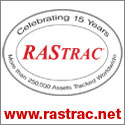
|
www.agc.org Contact Us Archives/Subscribe Advertise IT Forum IT Forum Steering Committee |
Smart Photo ID Cards Verify Worker QualificationsBy David Finkelstein Personal safety and security are often cited as the number one priority in the construction industry, and rightly so. There are a myriad of ways in which every member of a construction team, from CEO to day laborer, ensure safe practices. But verifying that a worker is trained and qualified for a given job is one of the most basic elements to running a safe construction site. Even here, new cloud-based technologies are becoming available to assist in this vital function. Every foreman assigns jobs based on skills and qualifications of his crew members. Matching individuals to the tasks at hand is a constant challenge, and just as critical is avoiding problems or potential liability by not mis-assigning unqualified staff. In the past, it has often been difficult for foremen to validate the training records and qualifications of staff since paper-based records are hard to track and there is a tendency to rely too much on verbal claims and assertions. This can lead to poor progress on the worksite or to shoddy work or even accidents. Smartphones and Cloud Services Photo ID cards are often the basis for verifying identity and qualifications – the most common form is a driver’s license, confirming for example that a driver is CDL-qualified. Some advanced companies have deployed smart ID cards, containing a small computer chip in the card, which can contain the individual’s qualifications in an encrypted format. But the cost of such technology has limited these deployments to the largest, most advanced global construction companies. In the past year, a new form of ID card technology has surged forward, allowing similar capabilities at a much lower cost. This technology employs the quick response (QR) code, that black-and-white square which is now commonly seen in magazine advertisements. Printed on an ID card, such a code can allow anyone to scan the card and pull down training records from the cloud. Best Practices: ID Cards for Everyone While small sites with a small crew might be able to bypass the need for ID cards, larger jobsites see hundreds, if not thousands, of workers flow through at various stages of the project. Only a consistent ID card policy can ensure that each one is properly identified. Implementing procedures to confirm the identity of workers prior to allowing access to building sites or equipment is a basic requirement for any foreman. The most common way to check identities in large organizations is with photo ID cards, primarily drivers’ licenses and company ID cards. Increasingly, companies are instituting best-practices policies requiring all staff to carry a badge at all times. Traditionally, these have been simple "flash passes," which workers flash at the guard gate as they enter a worksite. The guard is supposed to verify that the picture matches the face before granting access. This passive photo ID card works and is sufficient for many organizations. But the limitations of this approach have led many companies to consider implementing smartcard ID cards. An effective ID card program provides two clear functions: identity verification and qualifications check. Identity Verification Qualifications Check For example, a major construction company specializing in building wind turbines is now printing all their employee ID cards with unique QR codes. Their utility-industry clients, and engineers from the turbine manufacturers can verify on-site the training and qualifications of any installer, since advanced skills are required to guarantee maximum energy output. Anyone with a smartphone can scan an employee’s QR code, and immediately check his qualifications. This reduces the risk of substandard performance and any potential liability issues. ID Card Production Same-day production, even of individual card orders, is available at very reasonable cost, with immediate distribution directly to the site where the cards are required. As in many non-core support fields, outsourcing ID card production reduces costs and provides greater control for construction companies to ensure that ID card policies are actually implemented and followed throughout their far-flung organizations. Outsourced card printing, combined with turnkey web services for identity checking and credential verification, makes a compelling case for risk managers to re-think how their current ID card program can be refined to reduce the risks inherent in weak on-site personnel identification policies. David Finkelstein is president of InstantCard (www.instantcard.net), a leading online provider of photo ID cards and credentialing services. He can be contacted at 301-216-3846 or dfinkelstein@instantcard.net. |

2300 Wilson Boulevard, Suite 300 · Arlington, VA 22201 · 703-548-3118 (phone) · 703-548-3119 (fax) · www.agc.org
About AGC | Advocacy | Industry Topics | Programs and Events | Career Development | News & Media
© Copyright 2025 The Associated General Contractors of America. All rights reserved.


